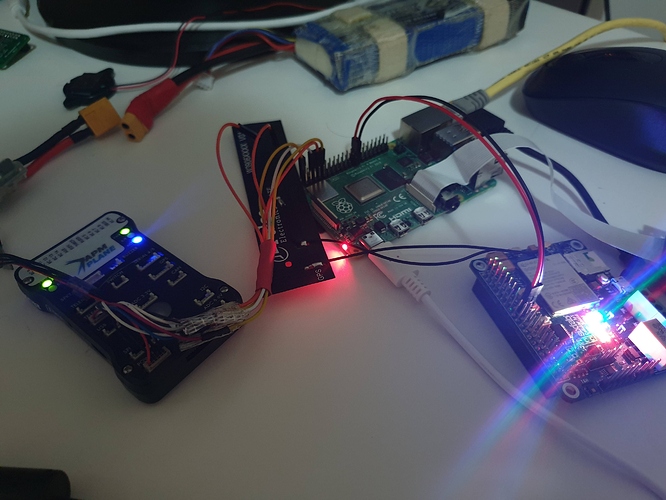Pixhawk has No USB connection.
Below are two scenarios, hopefully can provide enough information.
Scenario 1: Sixfab shield NOT IN place on Pi, just connected with USB.
- connect to Pixhawk successful over serial
- turn on Sixfab shield with power button on board - both Pixhawk and Sixfab shield work fine
Scenario 2: Sixfab shield IN PLACE on Pi, connected with USB as well
- connect to Pixhawk over serial to begin with is OK
- turn on Sixfab shield with EITHER power button or in python script - Sixfab shield works fine but serial connection to Pixhawk drops. In mavproxy a bunch of random characters comes up on screen, and then says “Link Down”
Scenario 3: Sixfab shield NOT IN PLACE on pi, connected with USB and GPIO 11 jump wire between Pi and Sixfab board
- connect to Pixhawk over serial to begin
- turn on Sixfab shield with python script - both Pixhawk and Sixfab shield work fine.
This suggests to me that the Sixfab board is generating some noise on the serial pins even when USB is plugged in.
Scenario 3 photo:
